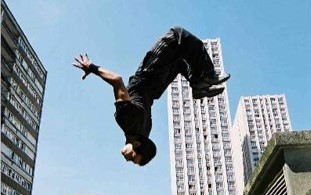- Nositelj kolegija: Igor Jukić
- Izvođač kolegija: Marko Bićanić
- Izvođač kolegija: Daniel Bok
- Izvođač kolegija: Sanja Šalaj
- Izvođač kolegija: Dario Škegro
- Nositelj kolegija: Vjekoslav Cigrovski
- Izvođač kolegija: Petar Barbaros
- Izvođač kolegija: Ivan Bon
- Izvođač kolegija: Igor Božić
- Izvođač kolegija: Dalen Geromella
- Izvođač kolegija: Maja Horvatin
- Izvođač kolegija: Krunoslav Jerčić
- Izvođač kolegija: Krunoslav Kević
- Izvođač kolegija: Tomislav Krističević
- Izvođač kolegija: Ivana Martinčević
- Izvođač kolegija: Iva Mišak
- Izvođač kolegija: Tena Mufić
- Izvođač kolegija: Nikola Prlenda
- Izvođač kolegija: Juraj Segin
- Izvođač kolegija: Hrvoje Sertić
- Izvođač kolegija: Mislav Škovran
- Izvođač kolegija: Ana Žigman
- Nositelj kolegija: Josipa Radaš

- Nositelj kolegija: Dajana Zoretić
- Izvođač kolegija: Mihaela Kiš
- Izvođač kolegija: Goran Leko
- Izvođač kolegija: Klara Šiljeg
- Izvođač kolegija: Bartol Vukelić

Occupational Kinesiology is a scientific-educational and professional interdisciplinary part of kinesiology that studies the laws of maximum safety, economy and functionality of human positions and movements when performing work tasks at different workplaces, with the primary goal of preserving the work ability of workers. It has its ultimate application in practice with workers, at their workplaces when performing their work tasks. In order to effectively preserve the work ability of workers, and despite the applied statodynamic efforts, multidisciplinary cooperation of experts from different fields of science is needed, so the cooperation of occupational safety experts, ergonomists (technical sciences), doctors (biomedicine and health), lawyers, kinesiologists (social sciences), etc. is needed. The interdisciplinary nature of occupational kinesiology is reflected in the knowledge of existing information, knowledge, cognitions, legal regulations, etc. from other sciences and the use of this information within the social science of kinesiology.
In the scientific sense, the goal of occupational kinesiology is to study the laws of maximum safety, economy and functionality of human positions and movements at different workplaces when performing different work tasks.
In teaching activities, the goal of occupational kinesiology is to educate students and future masters of kinesiology, i.e. physical education teachers, as well as students and future safety and protection engineers, i.e. occupational safety experts, about potentially possible mechanisms of injury, i.e. the occurrence of acute and cumulative trauma to the musculoskeletal system of workers during the performance of various work tasks at workplaces, as well as about the mechanisms of preserving the health of workers by applying physiological positions and functional movements, i.e. by applying the correct patterns of human locomotion, with the aim of contributing kinesiology to the preservation and improvement of the work ability of workers.
In practice, the goal of occupational kinesiology is to educate students, future and current workers to work in a safe way from the point of view of the quality of statodynamic efforts. In school age, automated correct postural and motor work habits enable more effective training of workers to work in a safe way, when the worker is employed, in the part related to statodynamic efforts. In this way, the potential negative impacts of the quantity of statodynamic effort of work tasks on the human musculoskeletal system can be reduced, which can directly contribute to the preservation of work ability, productivity, reduction of the rate of temporary incapacity for work, etc.
One of the goals of this book is certainly to present the field of occupational kinesiology to official state bodies so that the field of occupational kinesiology becomes an integral and indispensable part of the National Plan for Work, Safety at Work and Employment for the period after 2027, and kinesiologists as soon as possible a full-fledged formal legal part of the multidisciplinary occupational safety team.
The book is intended for students of the Faculty of Kinesiology within the course Occupational kinesiology . It is also intended for all students at other higher education institutions that will include the field of occupational kinesiology in their programs and area of interest. The book is also intended for graduate kinesiologists, occupational safety experts, occupational and sports medicine specialists, doctors, ergonomists and all other personnel who participate in the occupational safety system.
The current occupational health and safety system predominantly looks at statodynamic workloads quantitatively, while occupational kinesiology primarily looks at them qualitatively. Qualitative assessment of statodynamic efforts refers to the assessment of the correctness of postural-movement habits in the workplace. The OCCUPATIONAL KINESIOLOGY looks at incorrect postural-movement habits as mechanisms of injury.
The book explains in detail the most common potential mechanisms of musculoskeletal injury that workers should avoid at their workplaces when performing work tasks, all in order to preserve work ability and avoid those musculoskeletal disorders of the workers' movement system that would be associated with statodynamic efforts at work and injury mechanisms. Also, the mechanisms of preserving the health of the musculoskeletal system of workers are explained in detail. Mechanisms of injury and mechanisms for preserving the health of the system for the movement of workers, i.e. The most common incorrect and correct postural-movement habits are described textually, pictorially and in video. With the help of links and QR codes, it is possible to display videos instantly.
The mechanisms for preserving the health of the musculoskeletal system are nothing more than physiological postures and functional movements that can be seen as smart medical gymnastics because these are the postures and movements for which we are created, and these are natural forms of movement. Medical gymnastics and exercise in general is a form of physical activity that is applied due to a quantitatively and qualitatively inadequate lifestyle from the point of view of statodynamic workloads. One hour of proper and targeted physical activity a day is very important, but it is not enough if the workers hold themselves incorrect ly for the remaining 23 hours, sit and sleep incorrectly, incorrectly raise and lower loads of greater or lesser weight, etc. That is why occupational kinesiology emphasizes 23 hours of quantitatively and qualitatively adapted physical lifestyle, movement and work, both in the workplace and in private life.
The application of the field of occupational kinesiology , i.e. theoretical and practical education on proper and safe work techniques and their continuous application over many years, can significantly contribute to the prevention of musculoskeletal disorders associated with statodynamic efforts at work, and thus to the preservation/improvement of work ability. Taking care of the health of their employees is one of the primary tasks of every employer. Caring for the health of the working population, as well as all other citizens, is one of the primary tasks of the state as a whole.
Occupational kinesiology is an important measure of primary prevention of musculoskeletal disorders associated with the statodynamic efforts of the working population. One of the first measures in the effective prevention of musculoskeletal disorders associated with statodynamic exertion at work should be to train workers to work in a safe manner in the quality of performance of statodynamic efforts.
The Occupational Safety and Health Act and the Ordinance on Occupational Health and Safety of Workers Exposed to Statodynamic, Psychophysiological and Other Exertions at Work stipulate that the worker must be trained to work in a safe manner in the matter of statodynamic efforts. Also, the current legal framework provides that this is done exclusively by occupational safety experts. However, the professional staff that should train workers to work in a safe way in terms of the quality of statodynamic efforts, i.e. posture technique, are kinesiologists because, according to the existing accepted plans and programs in Croatia, no study has a theoretical and practical component of practicing and practicing motor skills, such as manual load transfer, as the Faculty of Kinesiology has.
During all five years of study, kinesiologists study the laws of physical activity and the consequences of physical activity, as well as the consequences of physical inactivity on the human body, and physical work is nothing more than physical activity. Kinesiologists are experts who deal with education and have the necessary not only professional but also pedagogical knowledge. Kinesiologists are trained to work with people and teach people proper movements, exercises, ways of handling loads, but also ways of posture when performing various movements with and without a load. Kinesiologists are also trained to demonstrate exercises, explain, adapt, kinesiological methodology, etc.
Education on proper postural and movement patterns should begin in preschool age, and continuous education should continue at school age and during study, by kinesiologists in physical education classes. At the beginning of work and during their working life, workers should be trained to work in the matter of statodynamic efforts by a kinesiologist as an associate to an occupational safety expert.
The application of the field of occupational kinesiology in practice is perhaps one of the most important and cheapest early intervention measures when it comes to preserving work ability and preventing musculoskeletal disorders associated with statodynamic efforts in the workplace.
Knowledge, education and lifelong learning are the fundamental drivers of the development of each individual and society as a whole (National Curriculum for Early Childhood Education and Care, 2014). The OCCUPATIONAL KINESIOLOGY fits perfectly into all existing curricula from the early and preschool curriculum, through the curriculum of primary and secondary schools, the curriculum for the cross-curricular topic of Health for primary and secondary schools, and in the literal sense of the word represents kinesiology as a school for life and work.
- Nositelj kolegija: Josipa Nakić

- Nositelj kolegija: Željko Hraski
- Izvođač kolegija: Marijo Možnik
